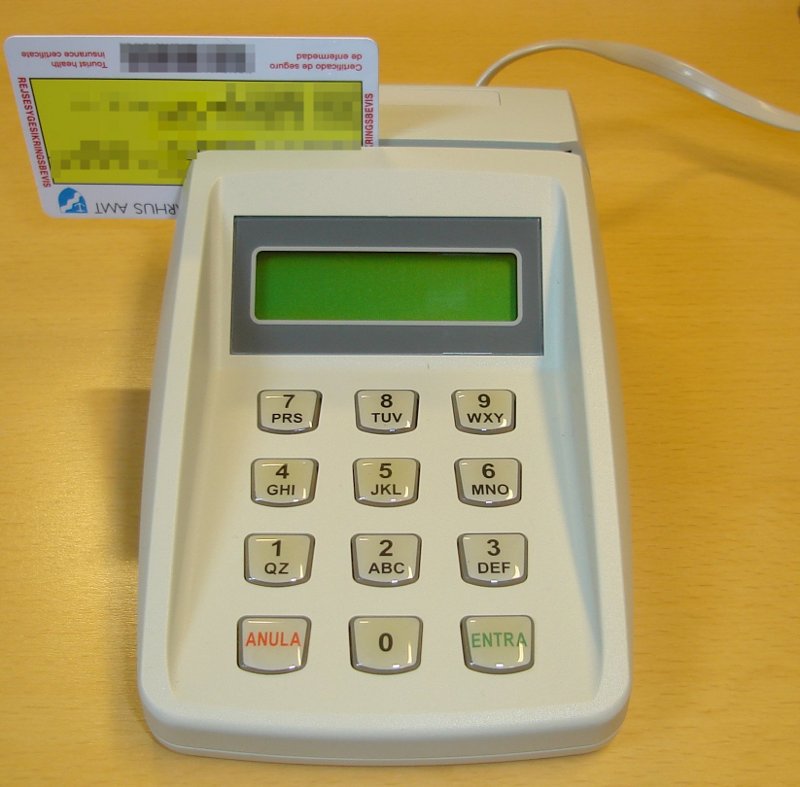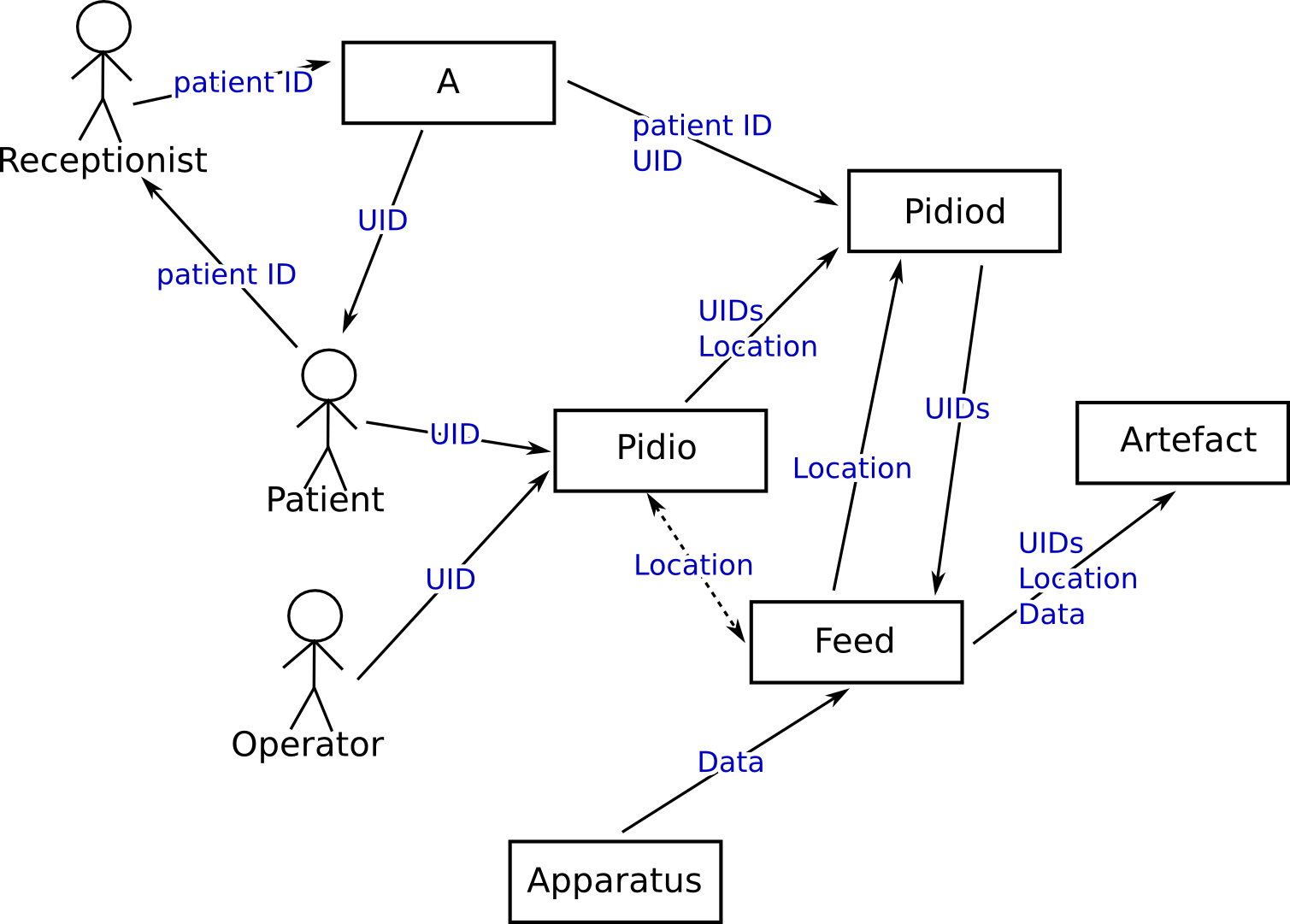Table of Contents
<texit info> author=Bent Bisballe Nyeng (deva@aasimon.org) title=The Pentominos Patient Registration System </texit>
The Pentominos Patient Registration System
The patient registration system handles the pairing of a patient, an operator and an apparatus at a given location at a given time interval.
This is necessary in order to correctly store the produced data in a way that makes it possible to retrieve it at a later point in time, for further analysis.
The system consists of five basic units:
- A system
Ais used by a nurse that binds the patient with an UID, for the day. - The
Pidio1) client that retrieves UID from an external reader, and sends it to thePidiodserver, together with its location ID. - The
Pidiod2) server that:- Handles the maps between UID to patient ID.
- Handles the maps between location ID to UID.
- The
Feed3) data retrieval client that makes the actual apparatus communication. - The
Artefactdata server.
The system works in the following steps:
- The patient arrives.
- The patient identifies him or herself at the desk, by patient ID.
- The patient ID is connected with an UID in the
Pidiodserver, usingA. - The patient is given a RFID tag containing that UID.
- The patient is sat down in front of an apparatus.
- The operator identifies him or herself to the
Pidioclient (by using a similar UID). - The patient identifies him or herself to the
Pidioclient. - The operator performs the measurement at the apparatus.
- The apparatus somehow sends its data to the
Feeddata retrieval client. - The
Feeddata retrieval client sends its preconfigured location ID to thePidiodserver. - The
Pidiodserver responds with the patient and operator ID. - The
Feeddata retrieval client sends the retrieved data, alongside the preconfigured apparatus ID, the newly retrieved patient and operator IDs, a timestamp and its preconfigured location ID, to theArtefactdataserver. - … jump back to step The patient is sat down in front of an apparatus. and cycle until done …
- The patient optionally returns the RFID tag when leaving.
What is already there
Currently we have a running implementation of all systems but A (hence the non-name). The current implementation of Pidio utilizes a simple numerical keyboard and a magnetic strip reader, for danish health insurance card.
To improve simplicity on the system, no identification is currently made of the operator (this is at the time being not mission critical data, but must be added at a later point due to documentation procedures)
 Documentation of all communication protocols between the systems exists but are not yet written in a formal way. These documents will be produced A.S.A.P.
Documentation of all communication protocols between the systems exists but are not yet written in a formal way. These documents will be produced A.S.A.P.
What needs to be made
We suggest that a new Pidio implementation is created based on the RFID technology, reusing the rest of the patient registration system.
In order to make it more 'sexy' it is essential that the reader itself is given a sturdy look-and-feel design.
The application A must be designed as a GUI application (and named properly) and implemented at least as a working prototype.

